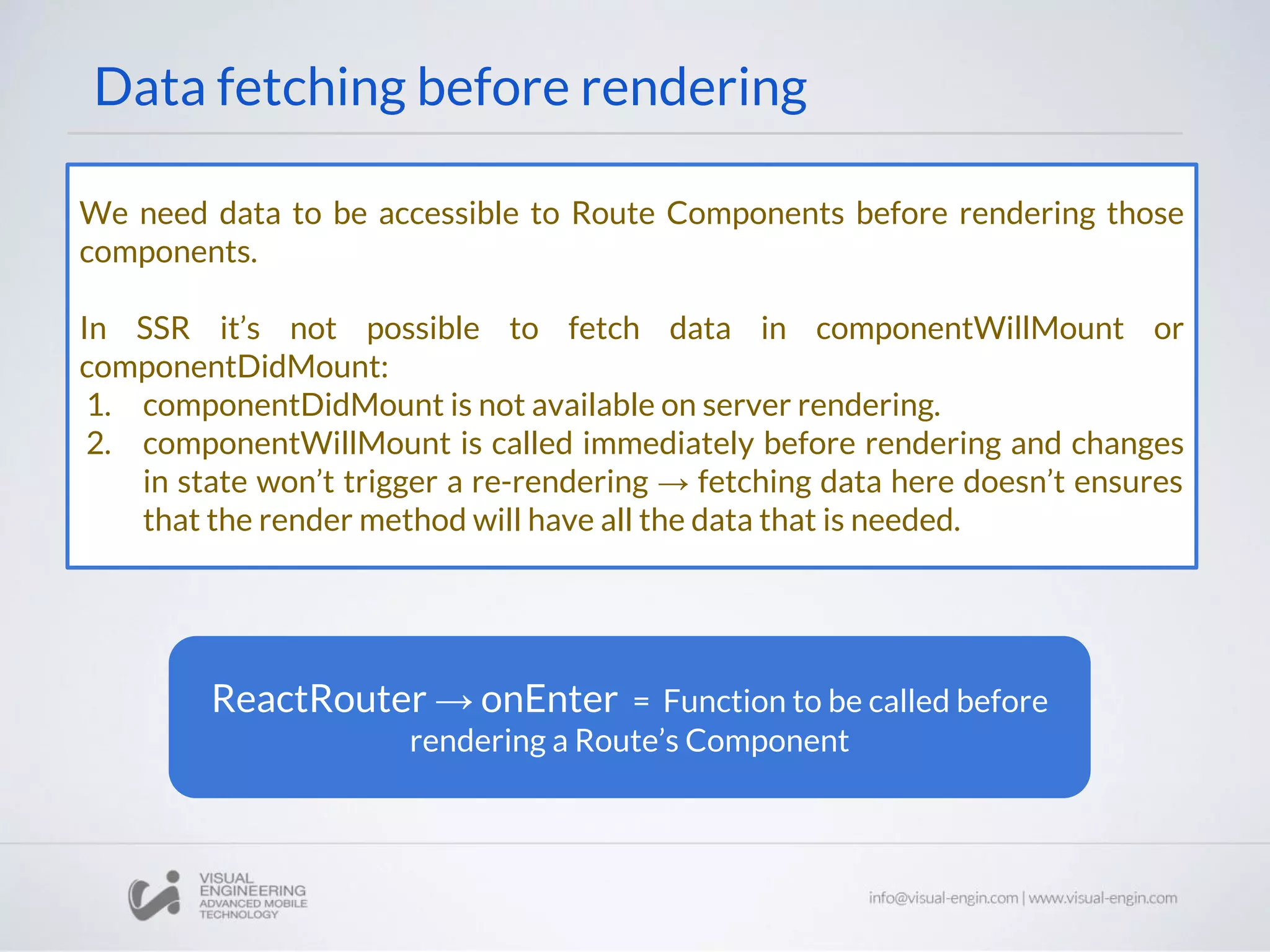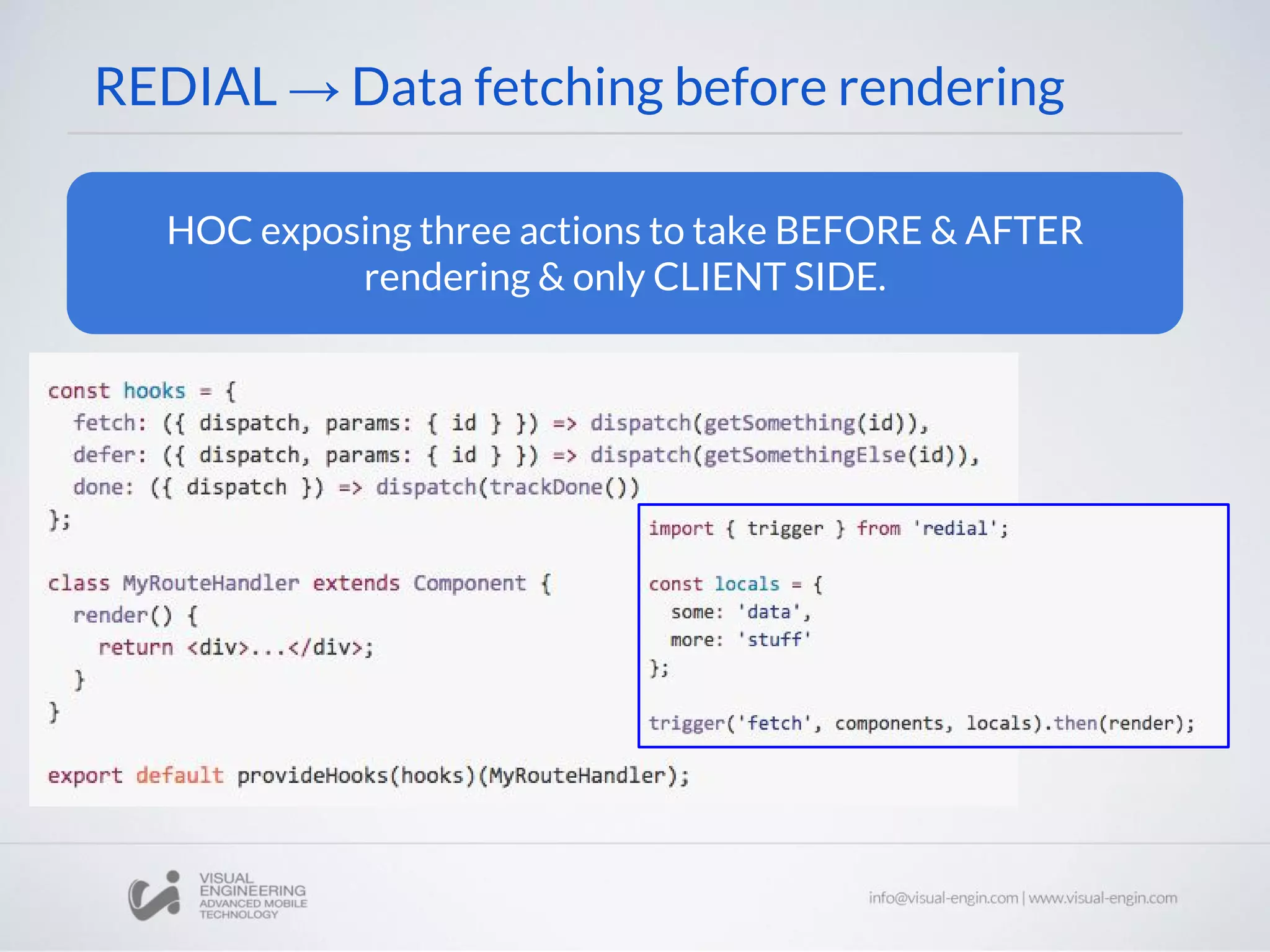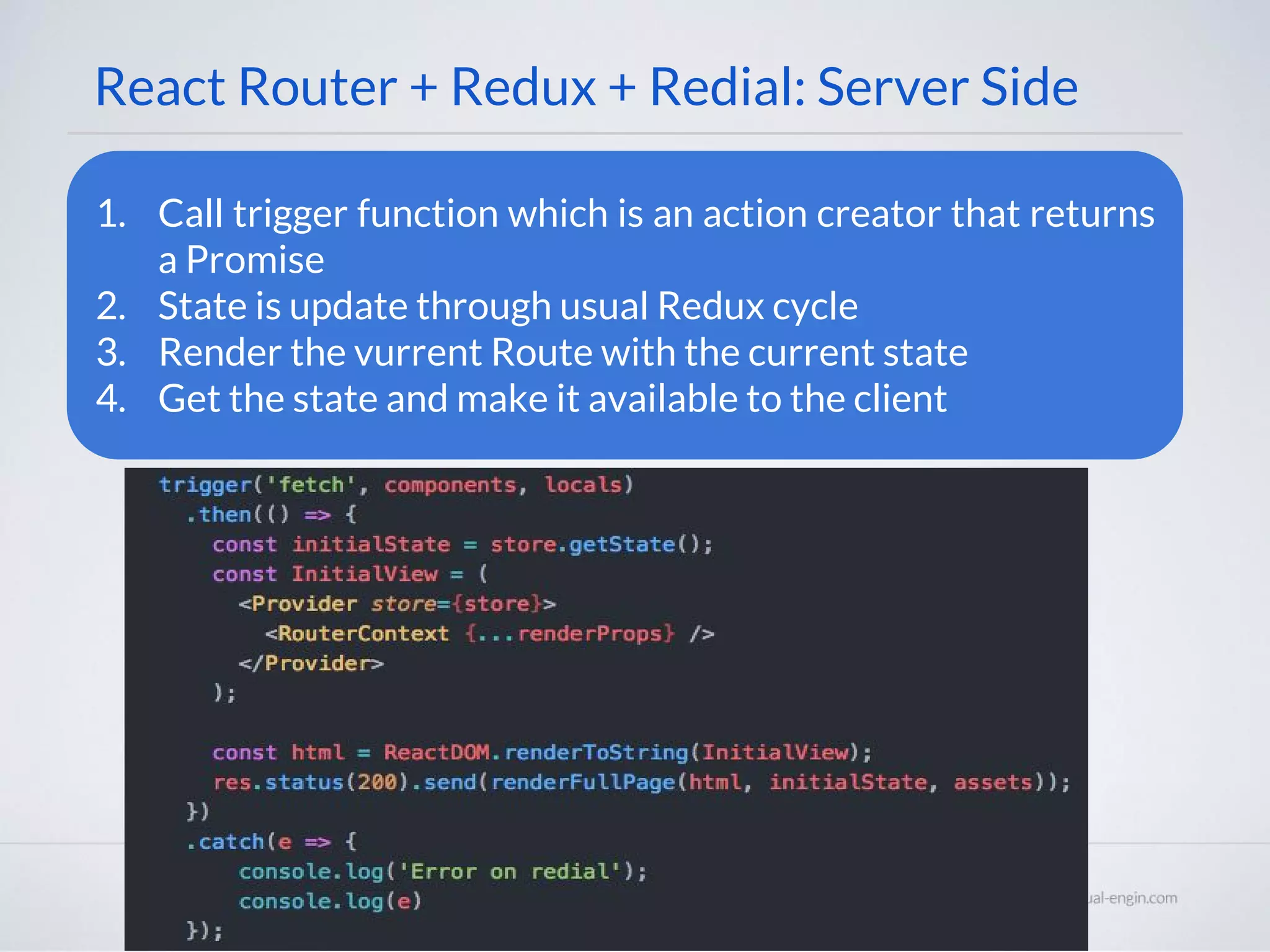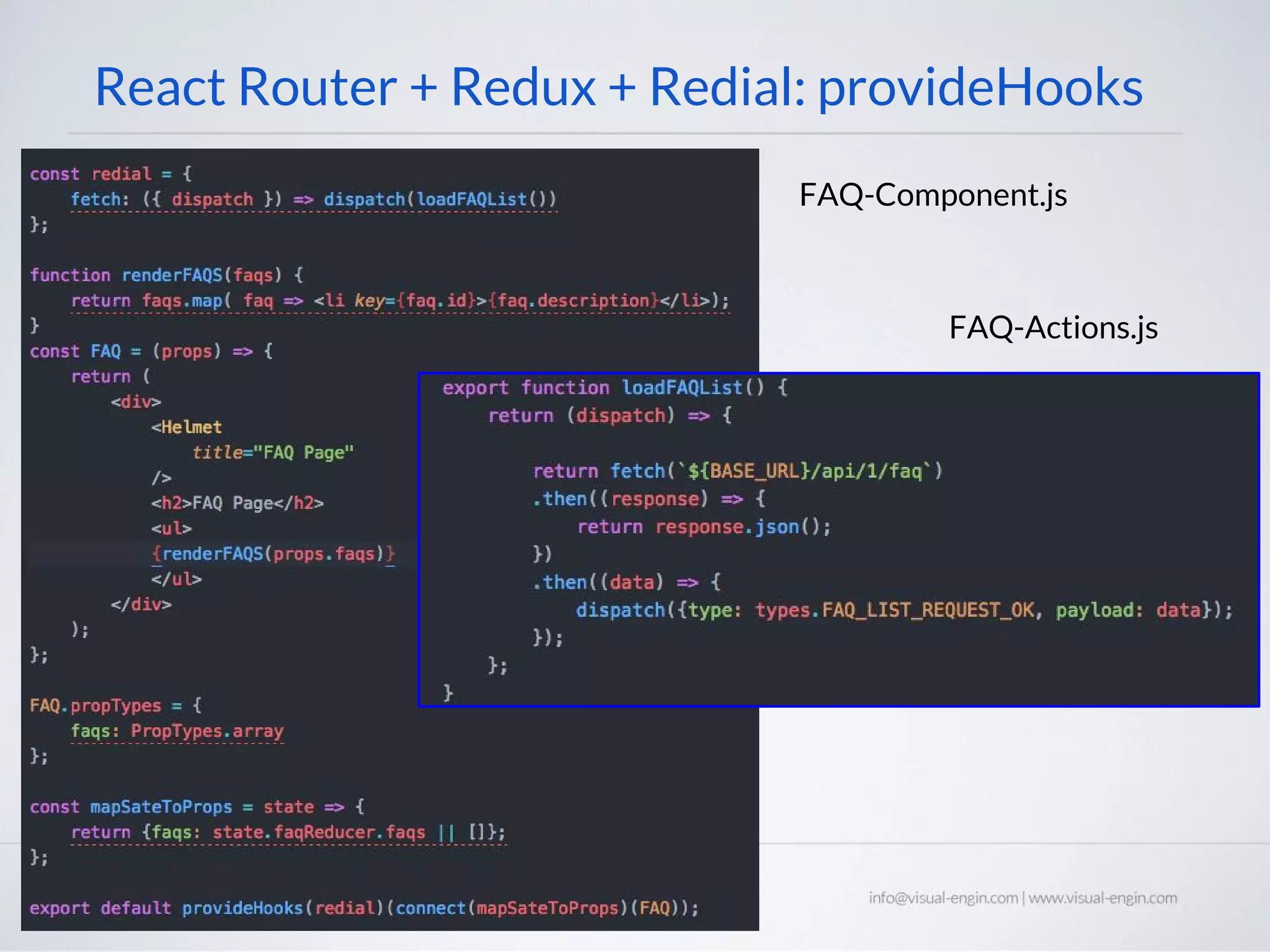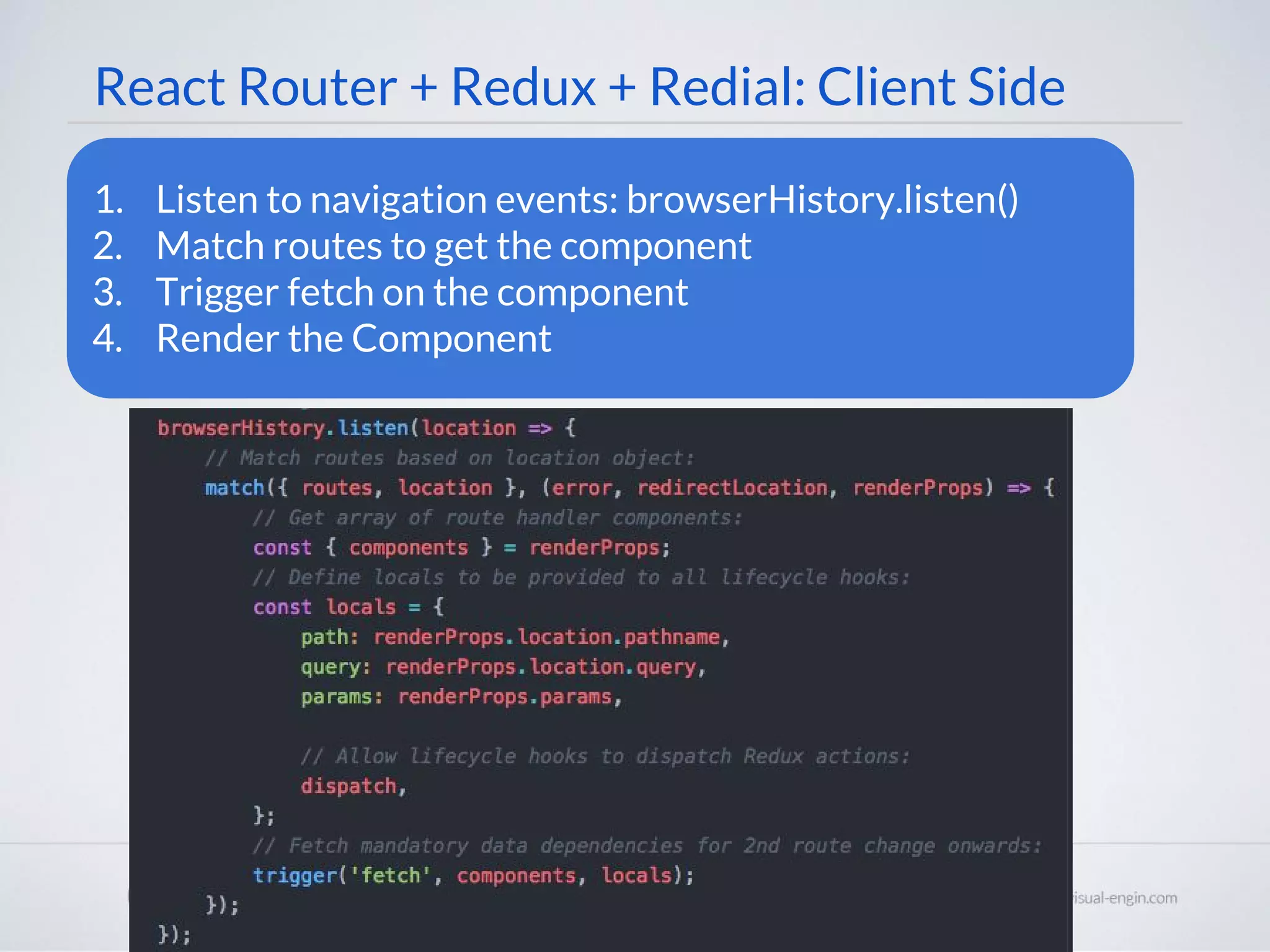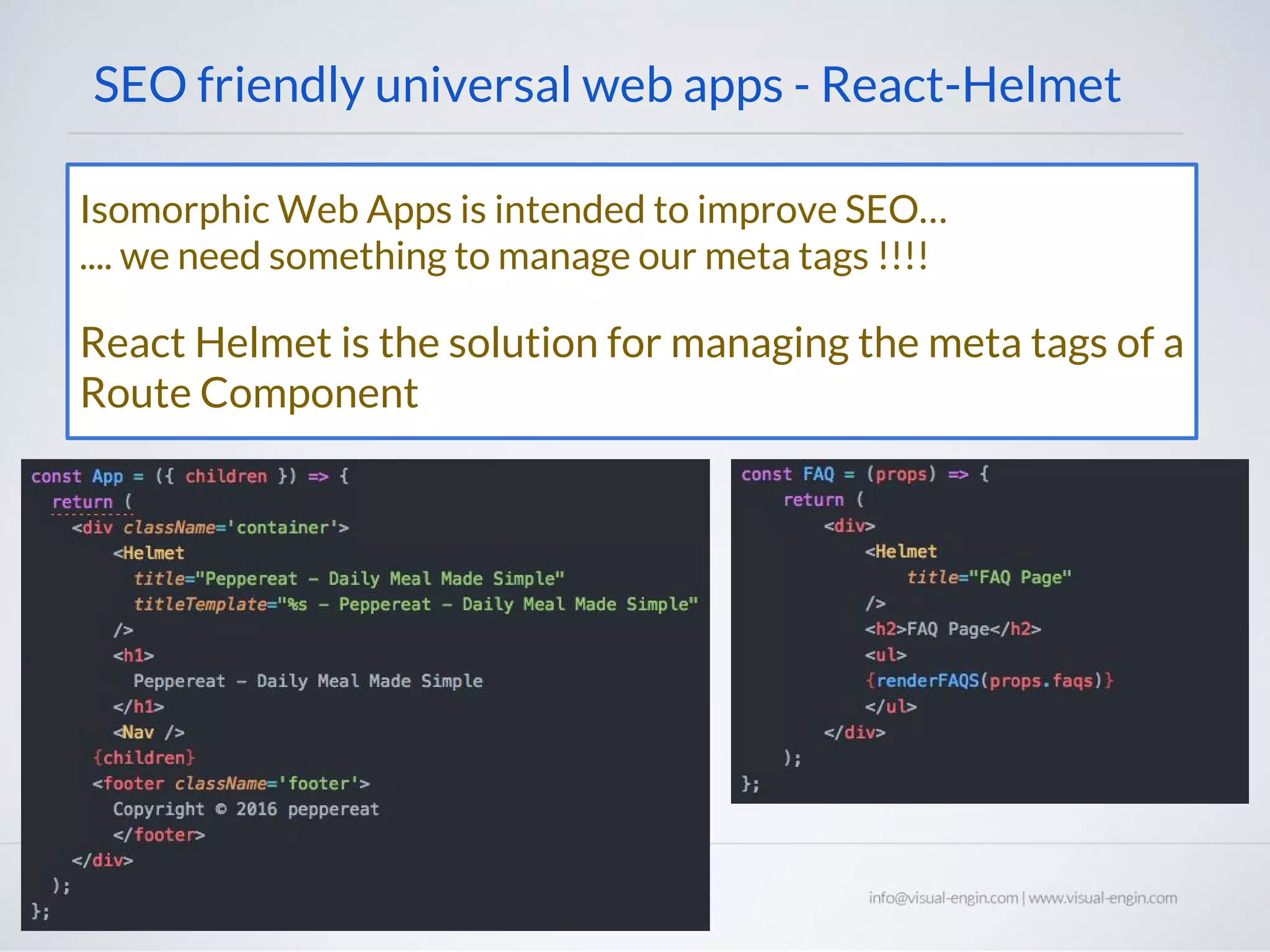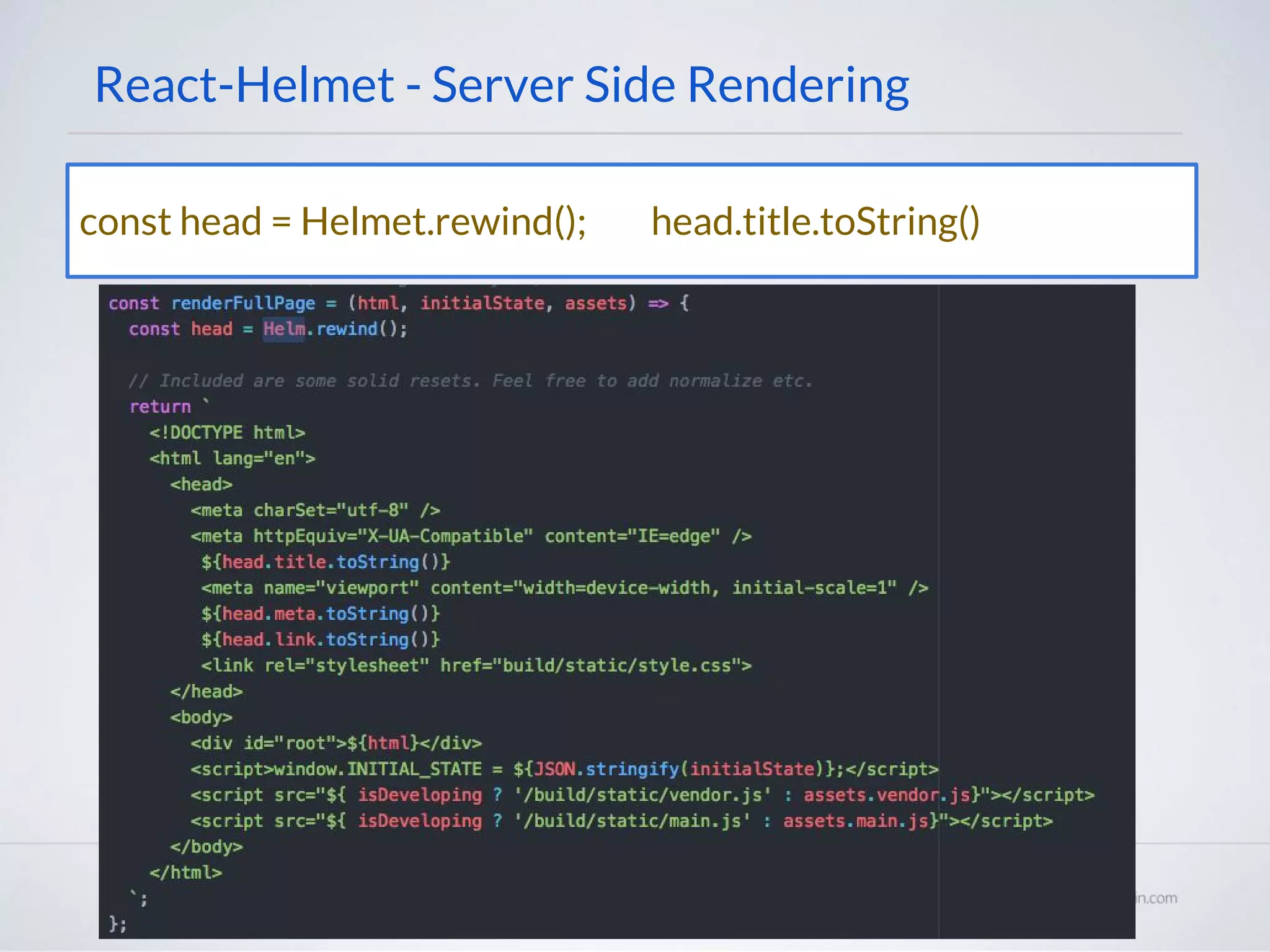The document discusses isomorphic web applications using ReactJS and Redux, detailing server-side rendering techniques, routing, and data management. It explains the integration of React Router for dynamic routing, the use of webpack for module bundling, and the necessity of data fetching before rendering components. Additionally, it highlights tools like React Helmet for managing meta tags to improve SEO for universal web apps.


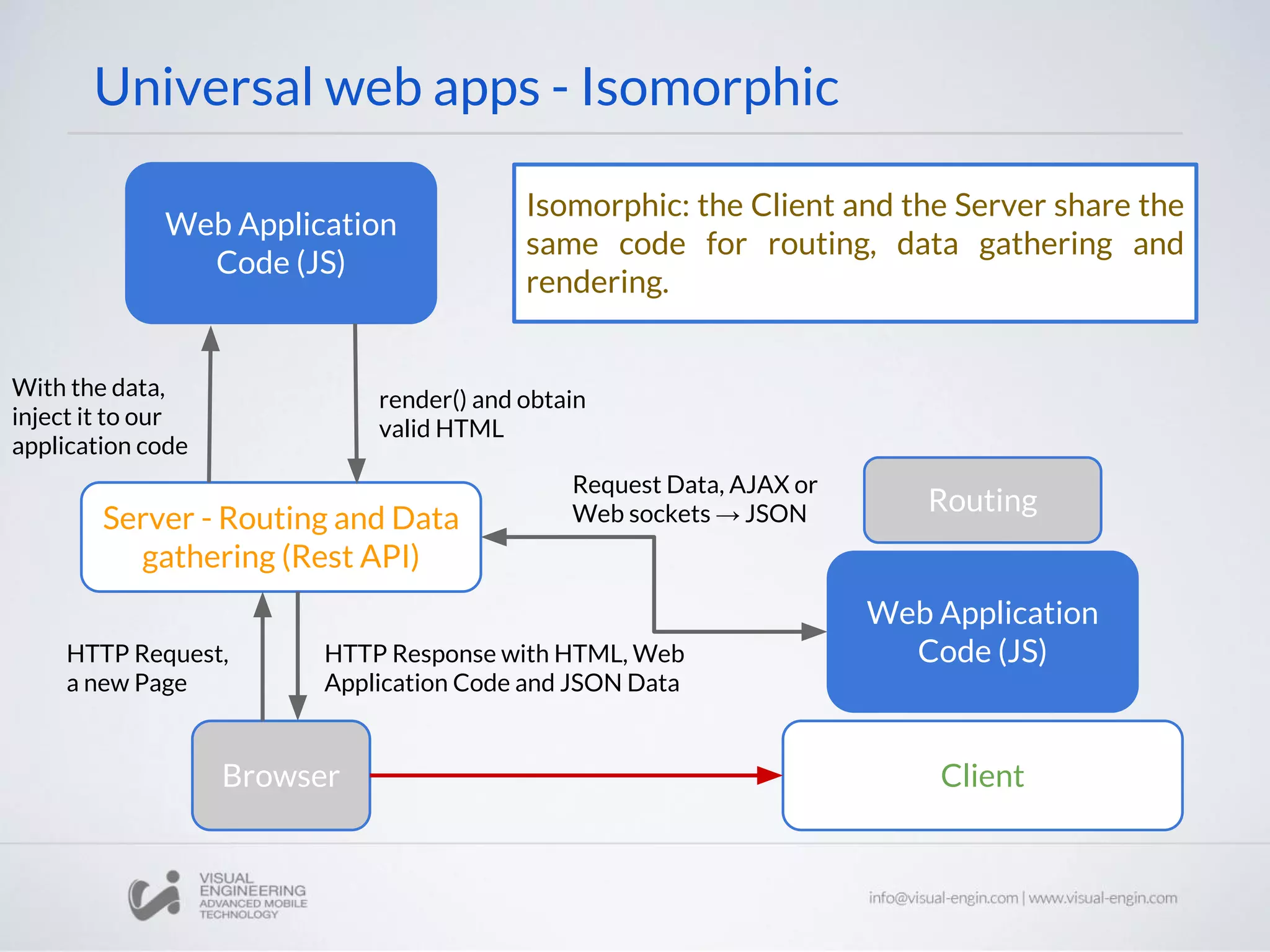
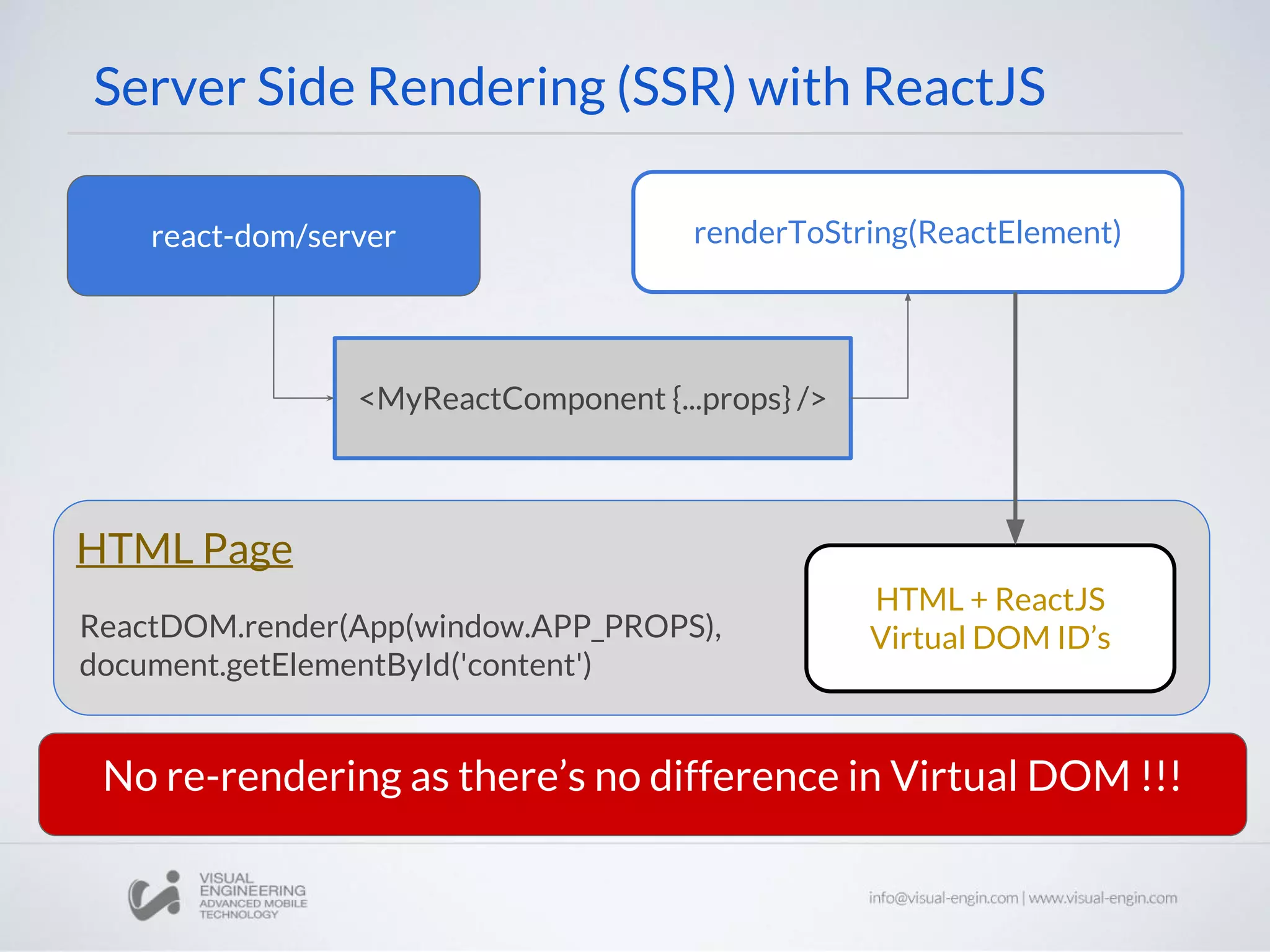
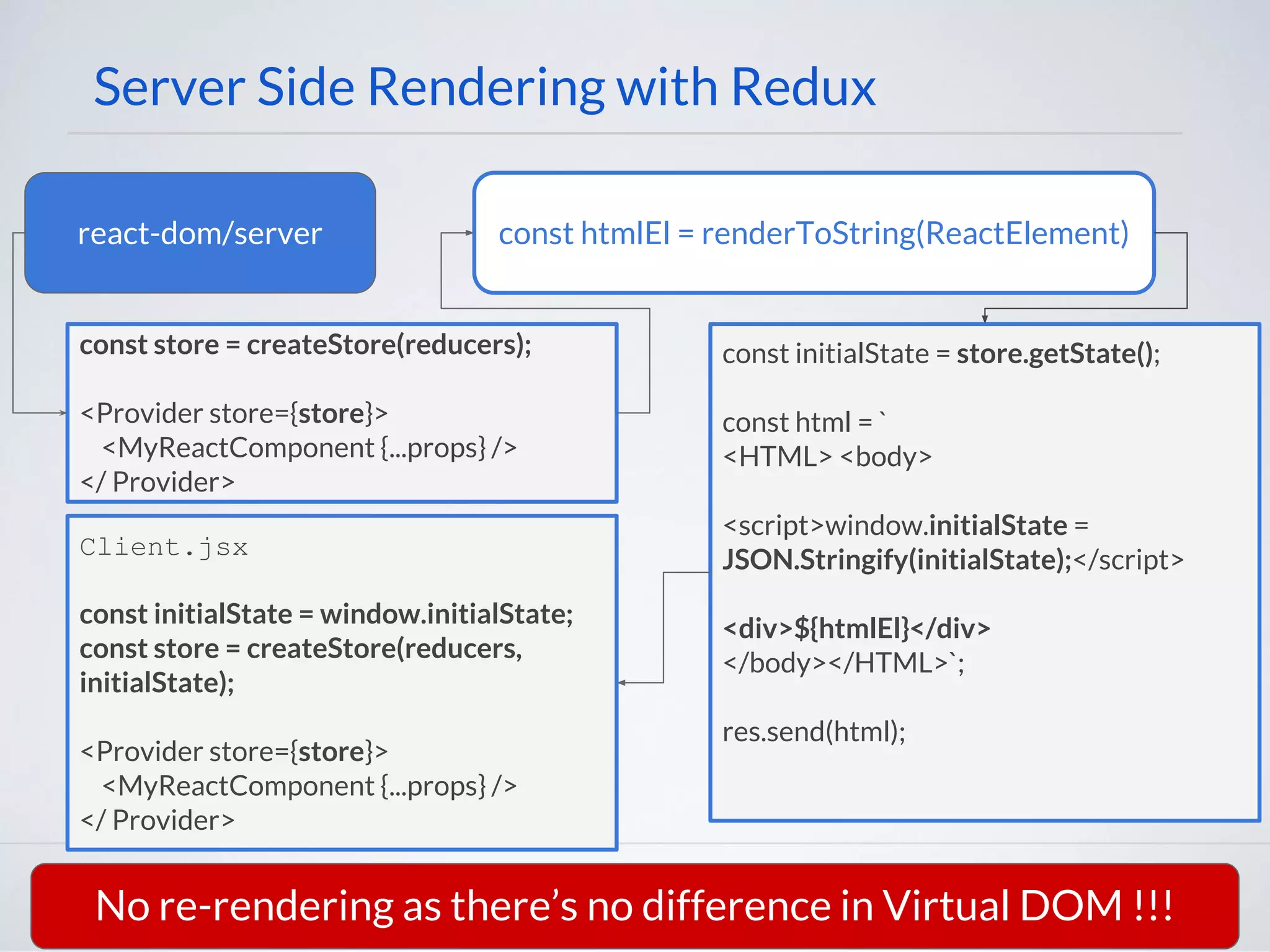
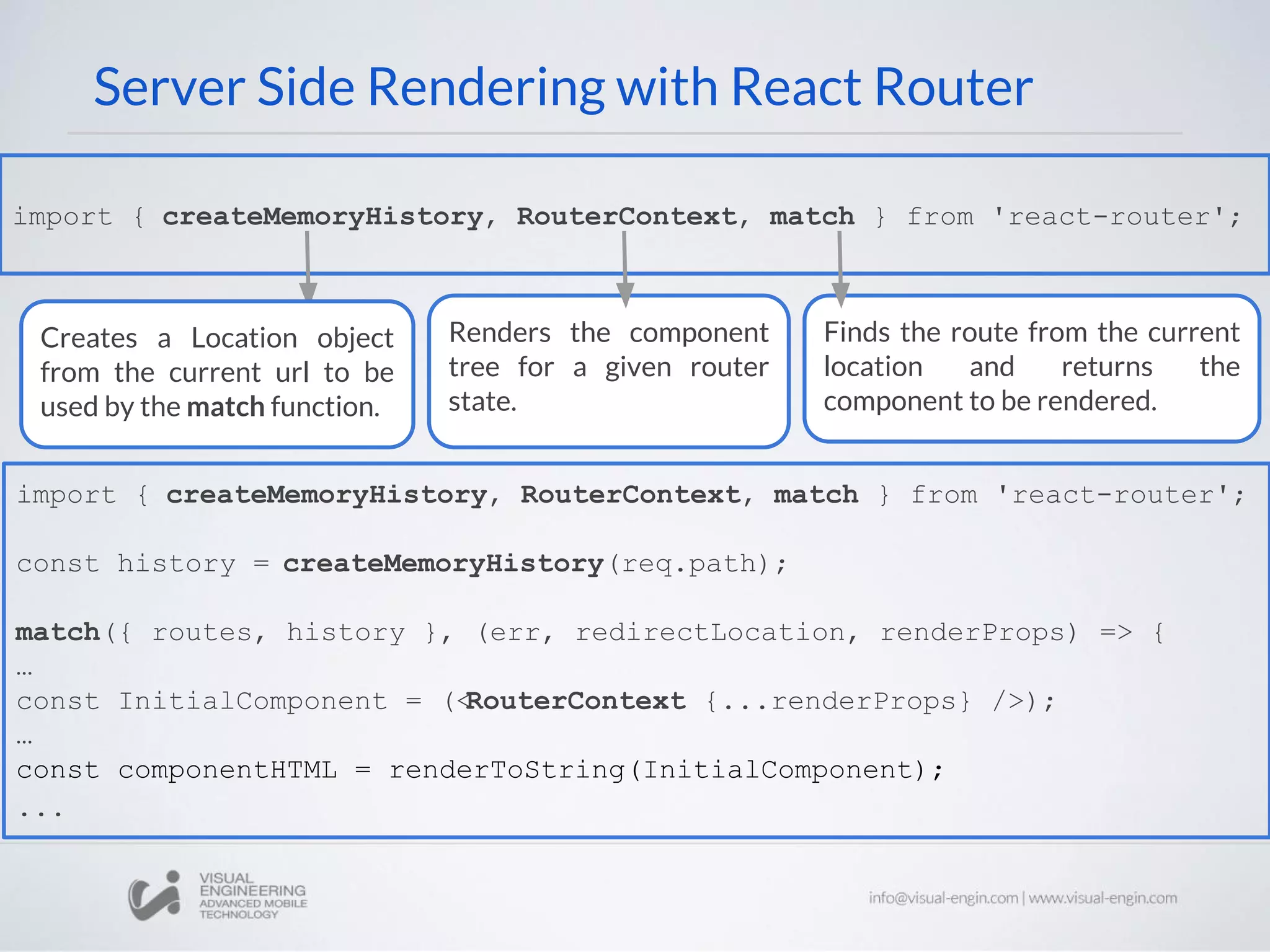
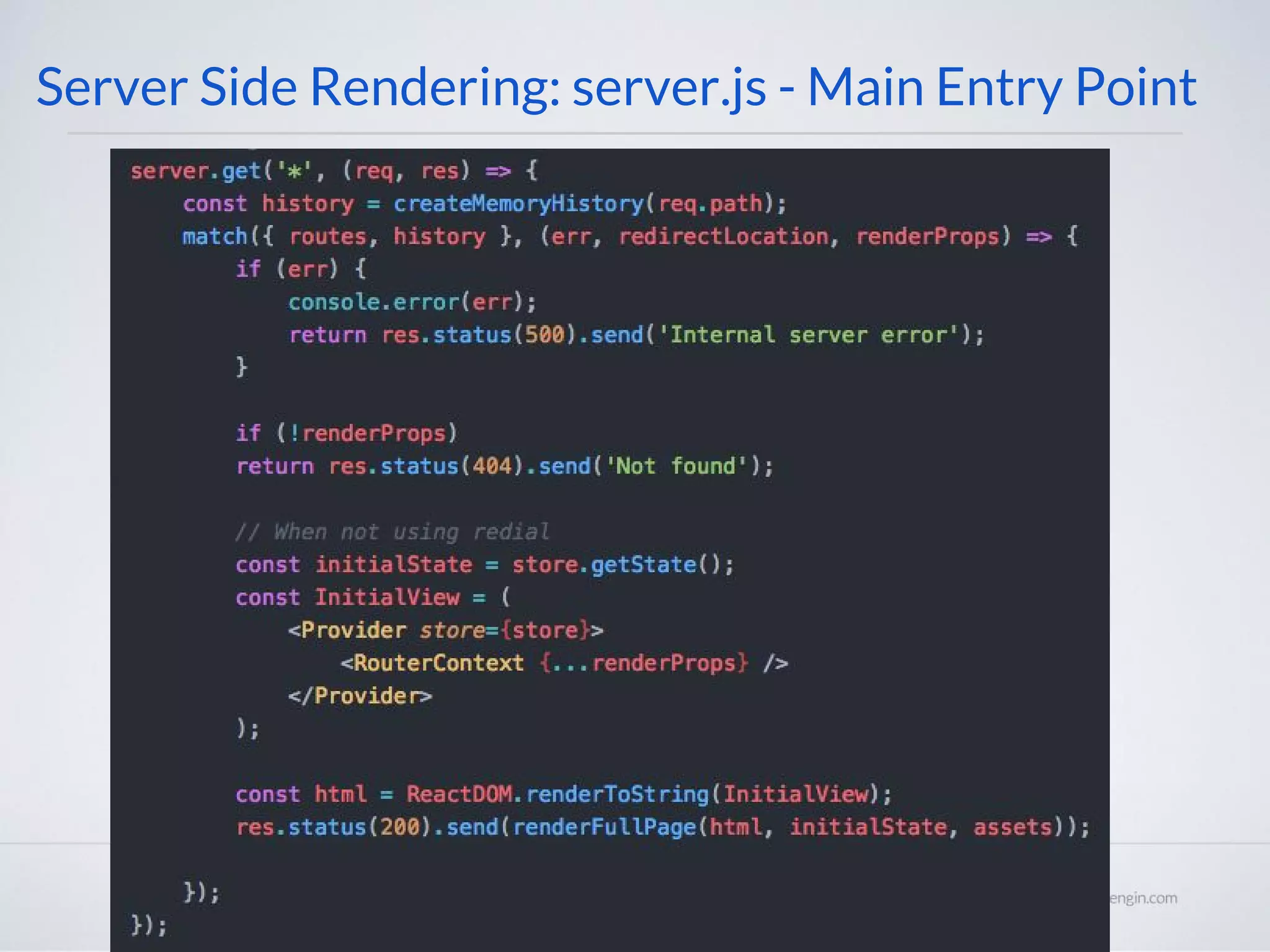
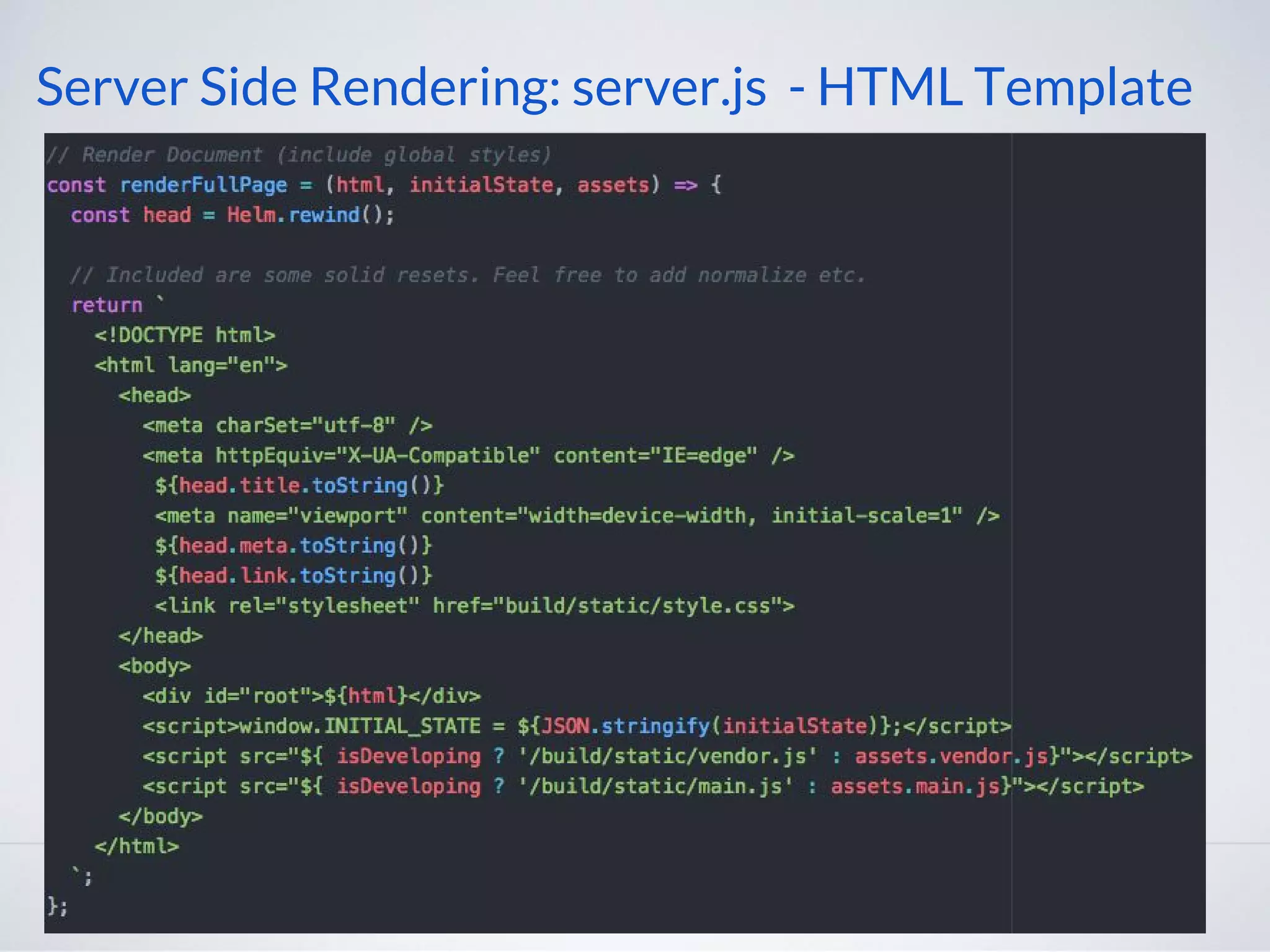
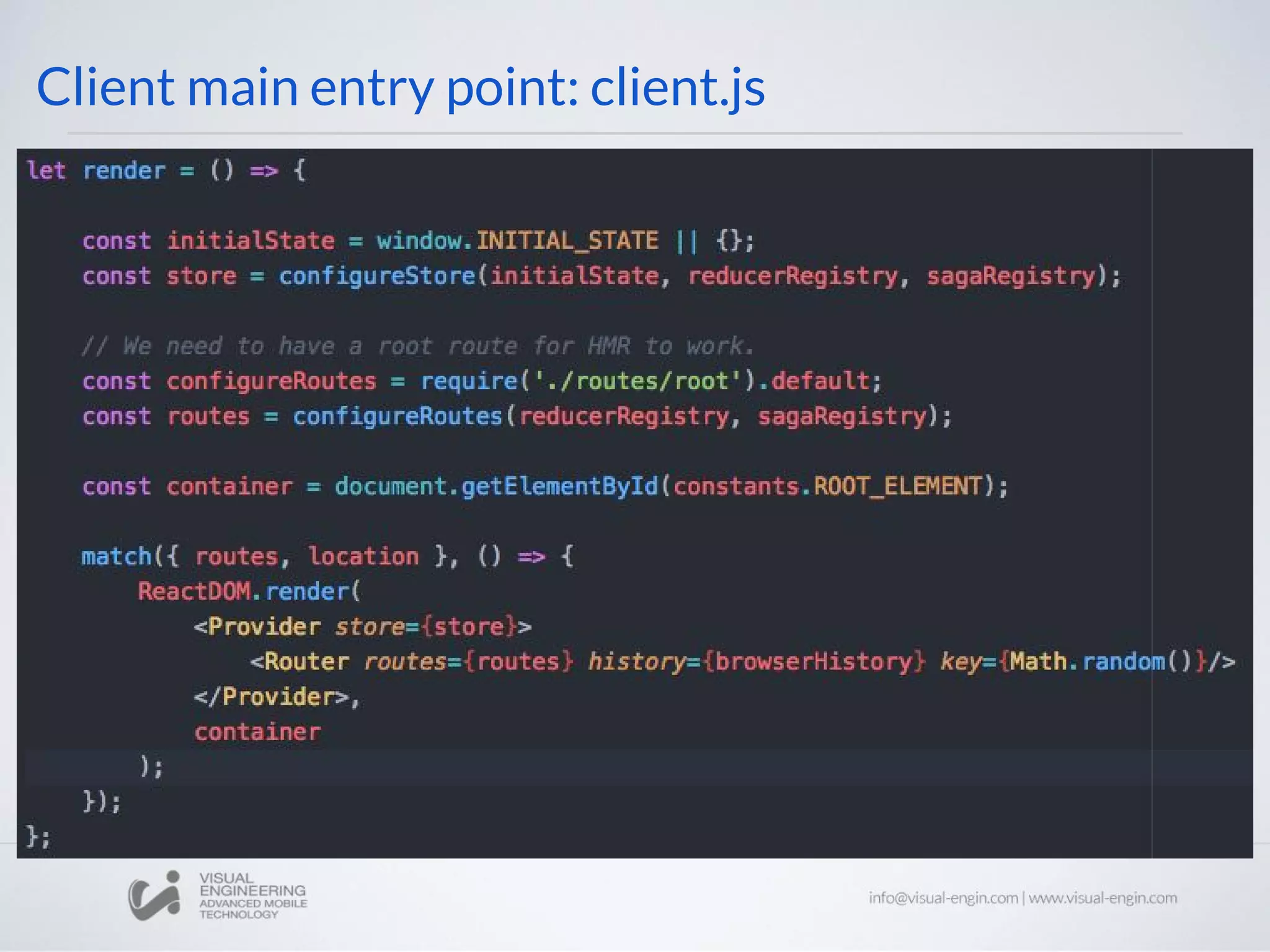
![Webpack bundles Entry point Output Loaders main: [ ‘client.js’ }, vendor: { ‘react’, ‘react-dom’, ‘react-router’, ‘redux’ } .../main.js .../vendor.js .../[chunk_id].chunk.js Babel_loader: ES6 → ES5 Style_loader | css_loader | sass_loader Plugins HotModule ReplacementPlugin() CommonsChunkPlugin() DefinePlugin() ProvidePlugin() ExtractTextPlugin() Module](https://image.slidesharecdn.com/isomorphicwebapps-170811101850/75/Workshop-27-Isomorphic-web-apps-with-ReactJS-10-2048.jpg)
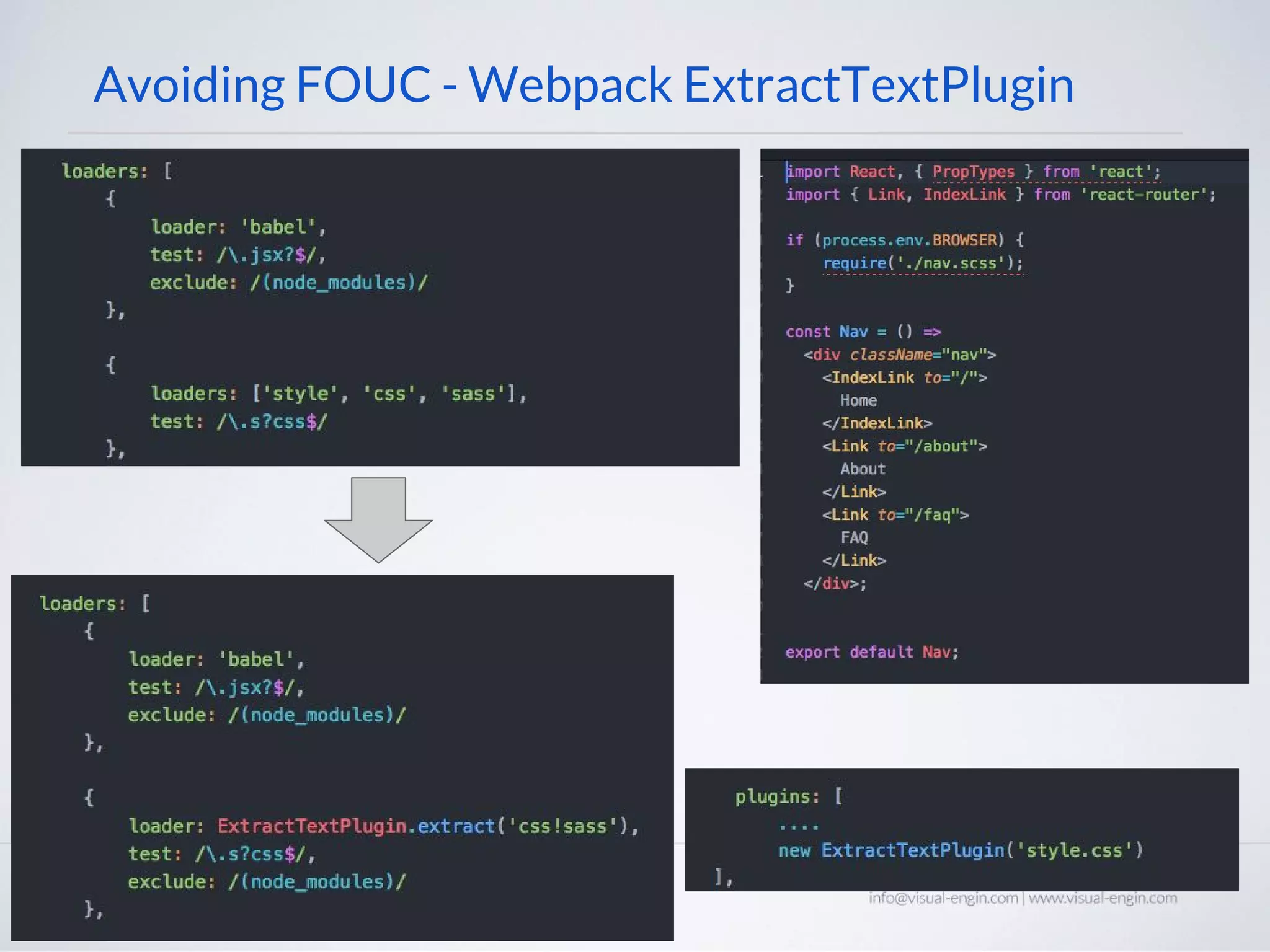
![Webpack code splitting // polyfill webpack require.ensure if (typeof require.ensure !== 'function') require.ensure = (d, c) => c(require); … require.ensure([‘myModulesDependencies’], (require) => { const a = require('./ModuleA').default; const b = require('./ModuleB').default; }); Output .../main.js .../vendor.js .../1.chunk.js .../2.chunk.js](https://image.slidesharecdn.com/isomorphicwebapps-170811101850/75/Workshop-27-Isomorphic-web-apps-with-ReactJS-12-2048.jpg)
![React Router - Configuration with Plain Routes <Route path=”/” component={App}> <IndexRoute component={Dashboard} /> <Route path=”about” component={About} /> <Route path=”inbox” component={Inbox} > <Route path=”messages/:id” component={Message} /> </Route> </Route> { path: ‘/’, component: App, indexRoute: { component: Dashboard }, childRoutes: [ { path: ‘about’, component: About }, { path: ‘inbox’, component: Inbox, childRoutes: [ { path: ‘messages/:id’, component: Message} ] } ] } from ... … to](https://image.slidesharecdn.com/isomorphicwebapps-170811101850/75/Workshop-27-Isomorphic-web-apps-with-ReactJS-13-2048.jpg)
![React Router - Dynamic Routing & WebPack { path: ‘/’, component: App, indexRoute: { component: Dashboard }, getChildRoutes(location, cb) { require.ensure([], require => { cb(null, [ require(‘./About’).default, require(‘./Inbox’).default ]); }); } } import About from ‘./components/About’; { path: ‘about’, component: About } { path: ‘inbox’, component: Inbox, childRoutes: [ { path: ‘messages/:id’, component: Message} ] } About.js Inbox.js](https://image.slidesharecdn.com/isomorphicwebapps-170811101850/75/Workshop-27-Isomorphic-web-apps-with-ReactJS-14-2048.jpg)
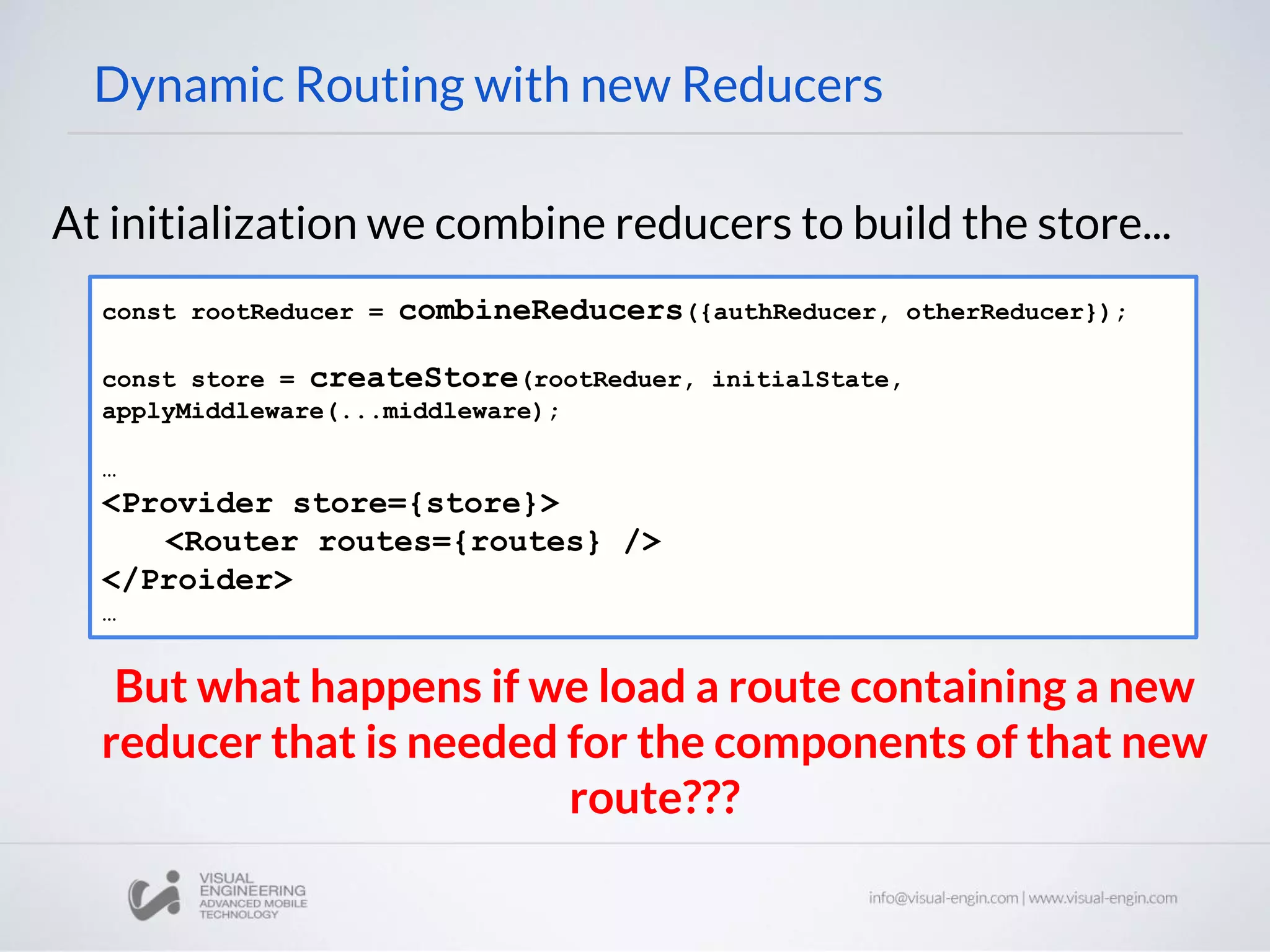
![Combining new Reducers - ReducerRegistry { path: ‘faq’, getComponents:(location, cb) { require.ensure([‘./components/FAQ’, ‘./reducer’], require => { const FAQ = require(‘./components/FAQ’).default; const faqReducer = require(‘./reducer’).default; store.replaceReducer(combineReducers({...existingRedu cers, faqReducer})); cb(null, FAQ); }); } } Now we have the initial reducers combined with the new ones and applied to the store via store.replaceReducer](https://image.slidesharecdn.com/isomorphicwebapps-170811101850/75/Workshop-27-Isomorphic-web-apps-with-ReactJS-16-2048.jpg)
